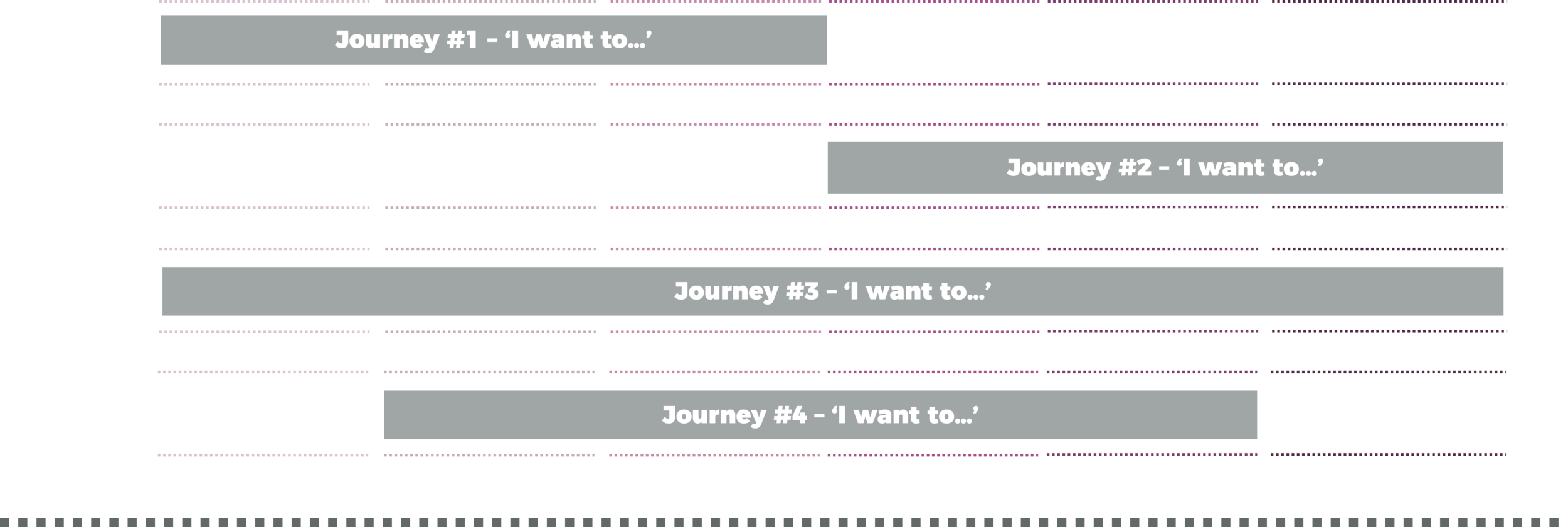Customer journey mapping: Before you map
We often receive briefs from our clients which are focused on mapping and optimising a specific ‘as is’ customer journey. The specificity of such a brief suggests that the journey in question is universally defined and understood across the organisation; however, in our experience, this is often not the case.
You might be asking, ‘Why is this a problem?’ Let’s think about a geographical journey - how can you plan or map out your route (and hope to have the best possible travel experience) without an understanding of…?
- …Who’s traveling (and what kind of travellers they are – needs, preferences, etc.)?
- …Where you’re setting off from (your starting point)?
- …Where you’re trying to get to (desired destination)?
- …Who and what can help you to get there?
The same principles apply to adopting a customer journey approach. Critically, before starting to map and optimise its customer journeys, a business needs to ensure that journeys are a) universally defined across the organisation and b) that journeys are defined by customer goals (as opposed to a specific channel/ internal process/ product or service).
A business should therefore begin by building their ‘Customer Experience (CX) Landscape’- a key (yet often overlooked) first step.
What is a CX Landscape?
A CX Landscape documents (at a high level) the key components of the organisation’s CX – based on current state and including both the ‘front stage’ and ‘back stage’ - and shows how key components relate to/ integrate with each other. More specifically, a CX Landscape is a framework which provides a business with a clear view of:
1. What customers are aiming to achieve with the organisation (on the 'front stage')
2. How the business is currently set-up to support and deliver the CX ('back stage')
Why is building a CX Landscape important?
Building a CX Landscape is a critical first step as it:
- Provides a clear definition of a business’ customer journeys - representing a consensus on how many journeys the business has, how they’re defined, and where each journey is perceived to start and end. This, in turn, provides a framework for everyone to work from and a clear scope for any subsequent customer journey mapping (CJM) activities
- Clarifies governance and ownership – and highlights those areas of the CX which are not currently ‘owned’ or where there are differences in opinion regarding ownership and accountability
- Provides an overview of current measurement activities, which can then be built upon via detailed deep dives/ evaluations (of individual customer journeys) that help to identify the right metrics and measurement approach for the business
- Highlights any gaps and overlap in terms of measurement, ownership and processes, etc.
- Informs customer journey prioritisation – with the best will in the world, a business may not have the resources to map or optimise all customer journeys and/or at best needs to know where to start. Once all journeys have been identified, additional data (e.g. relating to drivers analysis, commercial value, customer volumes, customer segments, etc.) can be overlaid to inform journey prioritisation and categorisation (the nature/ current state of individual journeys may demand different approaches)
What should your CX Landscape look like/ include?

Customer lifecycle phases: the typical steps experienced by customers throughout their end-to-end relationship with the organisation

Customer journeys:
- Defined by what customers are trying to achieve with the brand(s)- i.e. customer goals/ intended outcomes
- Plotted horizontally to show where they sit across the customer lifecycle, with a (perceived) view of where they start and end
- Including those which are ‘core’ (to the relationship) and ‘ad hoc’ (only experienced by customers in specific circumstances)
- With a summary of the key channel(s) that each journey can be experienced through

Metrics: what are you measuring and where are you measuring it? I.e. key metrics (customer, operational & commercial) that help the business to assess the extent to which customers can currently achieve their goals
 People: who within the business owns each part of the CX - and who else is responsible for shaping, delivering, and managing it?
People: who within the business owns each part of the CX - and who else is responsible for shaping, delivering, and managing it?

Processes: how and where do internal processes align to, and support the delivery of, the CX?

Tech. & tools: which systems and tools enable the business to support customers in achieving their goals?
Want to find out how we can work with you to build your organisation’s CX Landscape? Need support with defining your business’ customer journeys? We’re here to help - hello@thisislens.co.uk or 0113 344 8640…

